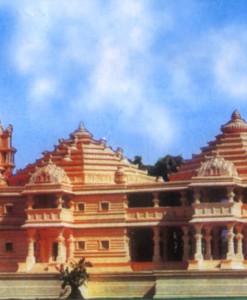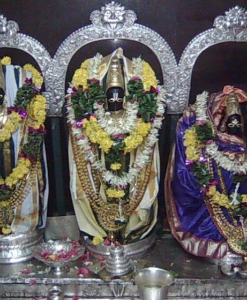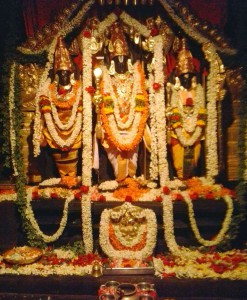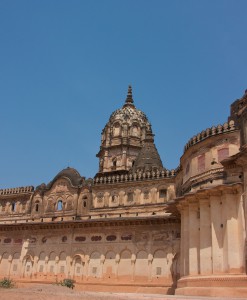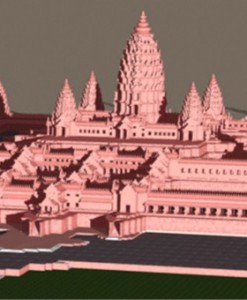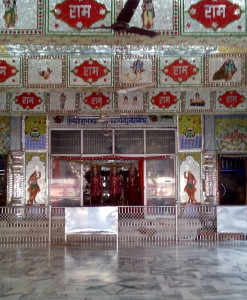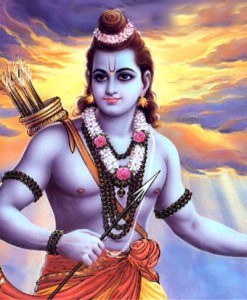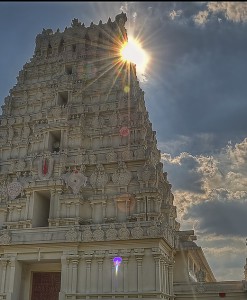No products in the cart.
Shri Ram Tirth Temple, dedicated to Lord Ram is situated 11 kms west of Amritsar on Amritsar Lopoke road. The temple dates back to the period of Ramayana and the place is famous for the ashram of sage Valmiki. It is the place where the sage gave shelter to Sita, wife of Rama when she was abandoned after the Lanka Victory. It was here that she gave birth to the twins Lav and Kush. The great epic Ramayana is also said to have been composed here by Rishi Valmiki. It is also believed that the fight between Lord Ram Chandra’s forces and Lav and Kush had also taken place at Ram Tirth.
Sri Ram Tirth Temple, Amritsar;
- Temple History
- Architecture
- How To Reach The Temple
- Daily Poojas And Festivals
- Videos
- Additional Information
Sri Ram Tirth Temple dates back to the period of Ramayana and is considered as the place for the ashram of sage Valmiki. As per the mythological beliefs, sage Valmiki gave shelter to Goddess Sita, wife of Lord Rama, in this ashram. Goddess Sita gave birth to the twins Lav and Kush in this ashram only. It is also believed that the flight between Lord Rama’s army and Lav and Kush had taken place at Ram Tirth. Furthermore, it is also said the great epic Ramayana was composed here by sage Valmiki.
The sprawling campus of Ram Tirth Temple spreads over 10 hectares and accommodates a large ancient tank (sarovar), Maharishi Valmiki’s hermitage, a well with stairs, and a number of temples scattered in the area. The campus is one of the major tourist attractions in Punjab. Every year a four-day long Ram Tirth Fair is celebrated here in the month of November in which lakhs of pilgrims participate.
As a part of up gradation plan of the facilities and attractions, it was decided to construct Valmiki Temple in the campus. The plans of the ambitious project were finalized by the state Government and the representatives of the Valmiki Samaj. The foundation stone was laid but due to some unavoidable circumstances, the construction could not be carried out till date.
Continuing the tradition of building temples in the sacred tanks, the Valmiki Temple has also been planned in the large sarover of about 34000 square metres. 25-metre-high temple stands on a large platform which is approachable form two sides of the sarovar through bridges.
The temple is a manifestation of unique blend of tradition and modernity. It was architect’s earnest endeavor that the form should resemble a traditional temple whilst its architectonics should follow the principles of modernity. The form of the temple conveys the truthful expression of structural systems, materials, and techniques of construction. On the other hand, the built form vis-a-vis its shape and proportions is in sync with the usually acceptable form of a temple in the minds of Indian masses. The entire structure is envisaged to be constructed in in-situ reinforced concrete because of its versatility and plasticity. Apart from this, concrete being a contemporary material, its use will be in consonance with the time. Externally the structure is proposed to be clad monochromatically in white marble which will make the temple a symbol of piece, harmony and serenity.
The design of the temple is governed by the principles of symmetry and strict geometry. The platform on which the temple stands has been carved out of a square placed on a diagonal axis in the tank. The outer edges of the deck have been curved which echo the fluidity of water waves in the sarover. The lower two levels of the temple are in circular shape and the third level which resembles the shikhara of a temple is square in shape and is again placed on a diagonal axis.
The lower level of the temple accommodates a museum where the life history of the sage will be depicted in the form of paintings, three-dimensional models and audio-visual aids. The main congregation hall and platform for deity is at upper level. A 3-metre wide verandah runs all around the circular hall to perform parikarma. The main hall is accessible through four straight-flight stairs emanating from the four directions which symbolically welcome one and all from all directions. If and when built, the temple will be an important landmark in the Ram Tirth Temple complex, Amritsar and will promote religious tourism in the state of Punjab.
By Road: Amritsar is well connected by road. The National Highway No. 1 (India) connects Delhi to Amritsar.
By Rail: The Temple is well connected through nearest Amritsar Railway station (12.3 km)
to major cities railway stations like Delhi, Agra, Mumbai, Chennai, Ajmer, Pali, Jaipur, Ahmedabad.
By Air: The Raja Sansi Airport (17.6 km) is the nearest airport to Sri Ram Tirth Temple.
The Temple is opens at 6:00 AM and closes at 9:00 PM. During this period major rituals of Lord Ram are performed. A big fair is held here about a fortnight after Diwali and for duration of five days. Great importance is said to be the tank which is believed to have been dug by Hanuman. The circumference of that particular tank is about 3km and there are temples on its sides.
Every year a four-day long Ram Tirth Fair is celebrated here in the month of November in which lakhs of pilgrims participate.
Other places which are worth visiting in Kolkata are Dakshineswar Kali Temple, Kalighat Kali Temple ,Belur Math, Tipu Sultan Mosque, Nakhoda Mosque, St. Paul’s Cathedral, St. John’s Church, Greek Orthodox Church, St. James’ Anglican Church (Jora Girja), Guruduwara, Synagogues, Armenian Church, Parsi Fire TemplesJapanese, Buddhist Temple, And Badridas Jain Temple



